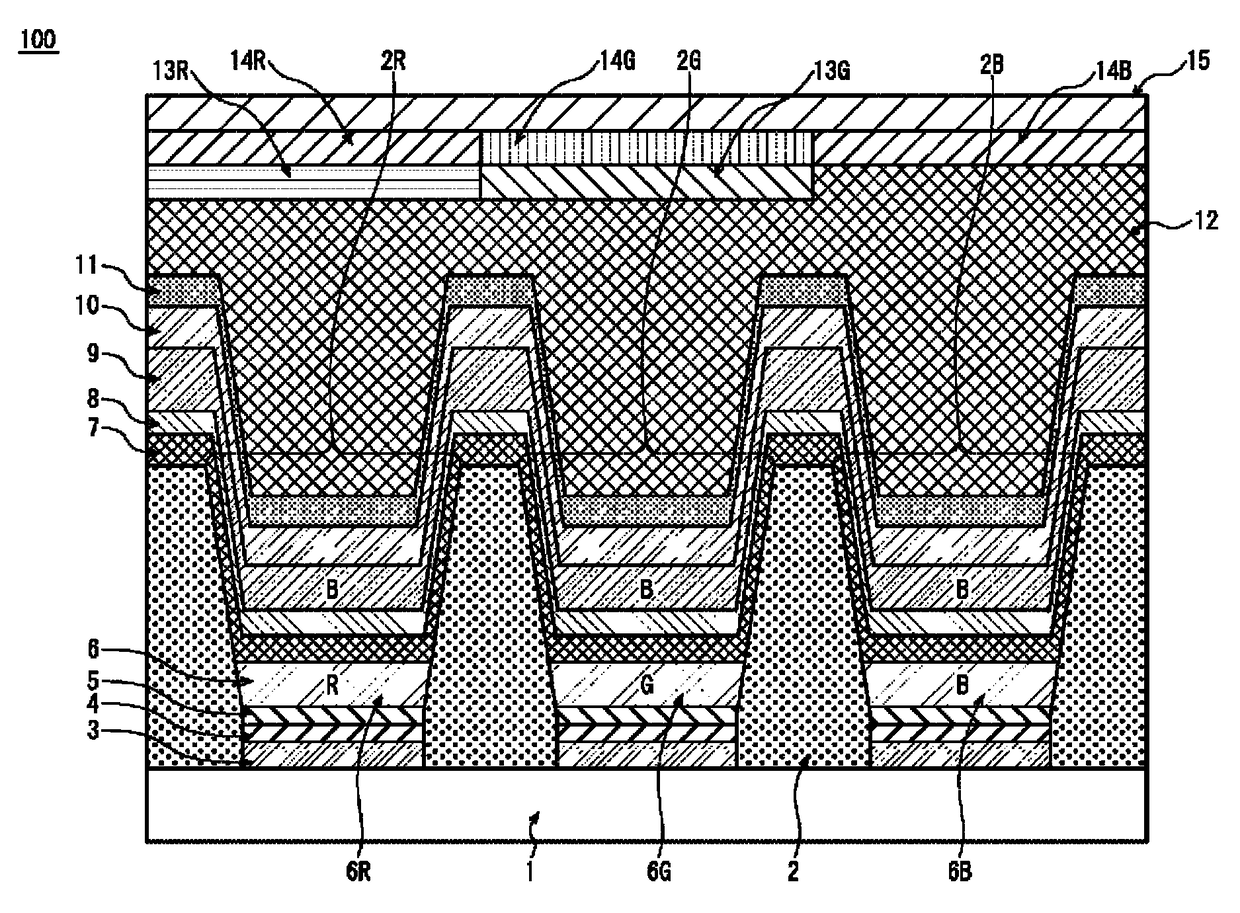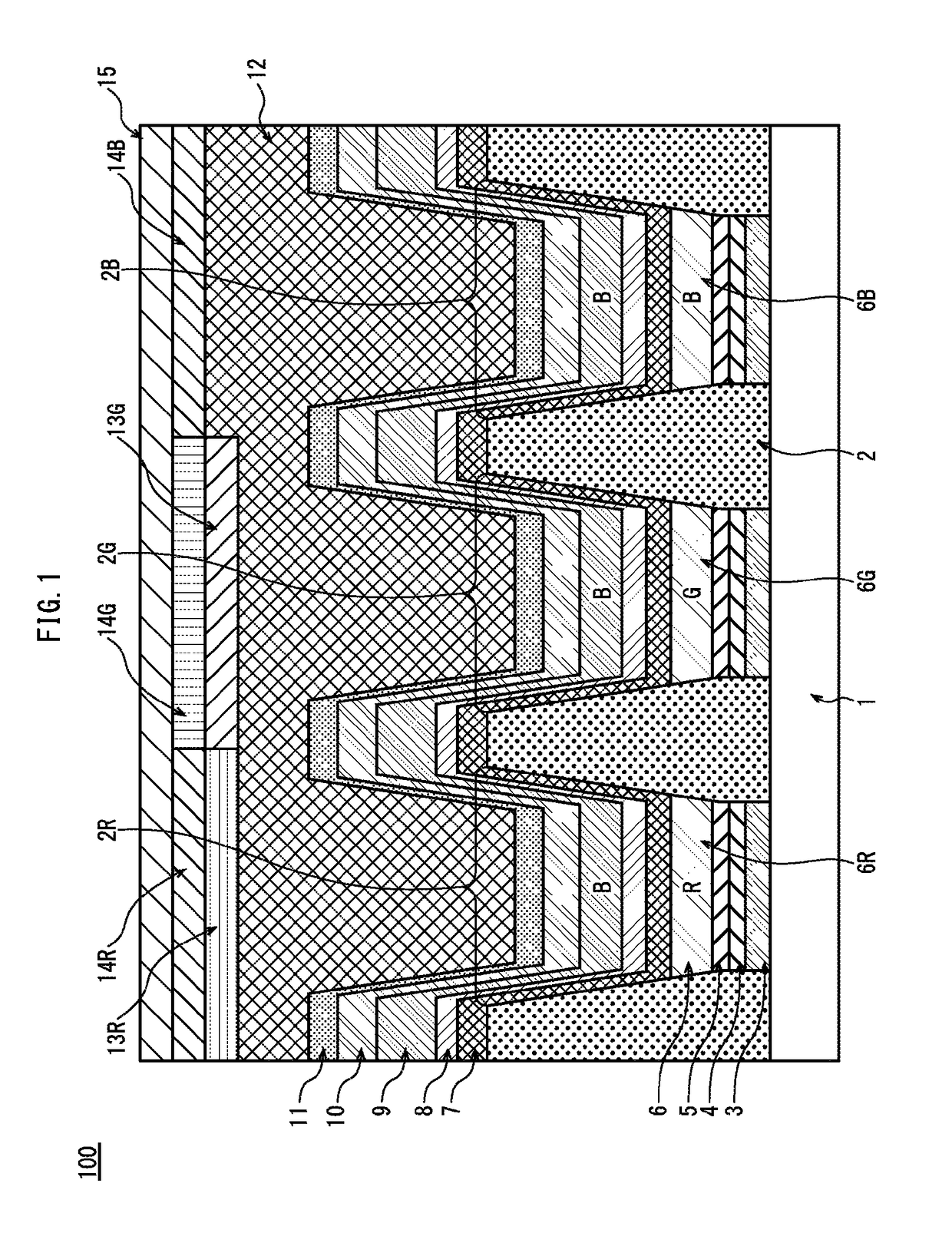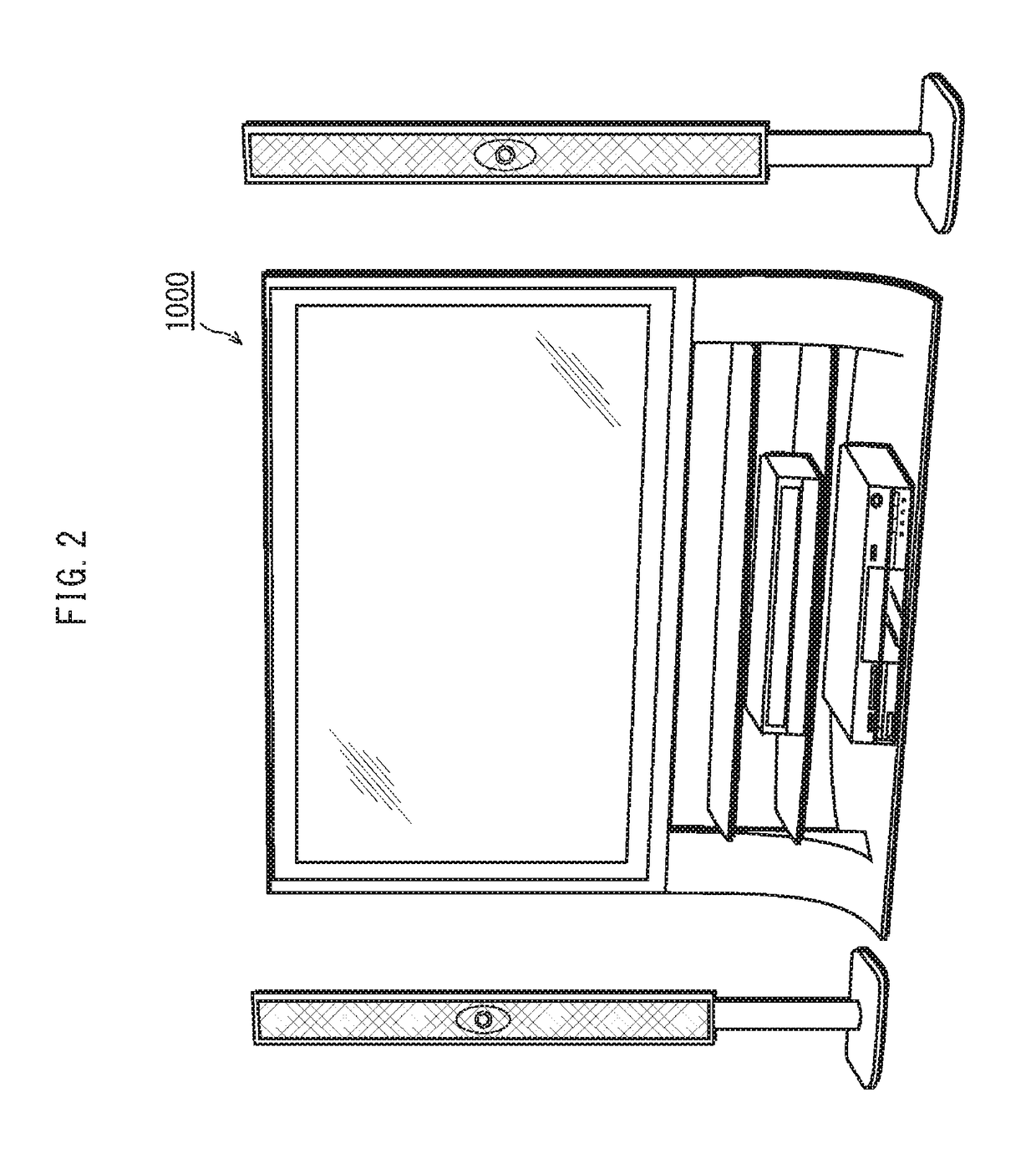Organic EL display panel, display device using same, and method for producing organic EL display panel
a technology of organic el and display panel, which is applied in the direction of electric lighting source, solid-state device, and light source, can solve the problems of prolonging the operating life of the blue organic el element, prolonging the operating life of the display device, etc., and achieves the effect of improving luminous efficiency and productivity, and high precision
- Summary
- Abstract
- Description
- Claims
- Application Information
AI Technical Summary
Benefits of technology
Problems solved by technology
Method used
Image
Examples
embodiment 1
[0051]In Embodiment 1, explanation is given on an organic EL display panel of the top emission type.
[0052]100>
[0053]FIG. 1 is a cross-sectional view schematically showing the pixel structure in the organic EL display panel 100 relating to Embodiment 1. The organic EL display panel 100 (hereinafter, abbreviated as display panel 100) includes pixels that are each composed of red (R), green (G), and blue (B) subpixels and are regularly arranged in a matrix of rows and columns.
[0054]As shown in FIG. 1, the display panel 100 has a substrate as the base thereof. Anodes 3 are disposed on the substrate 1 spaced from each other. A barrier rib 2 (hereinafter, referred to as bank 2) is disposed on the substrate 1, and has openings 2R, 2G, and 2B that are provided therein so as to correspond in position to the red, green, and blue subpixels, respectively.
[0055]Within each opening 2R, a hole injection layer 4, a hole transport layer 5, a red organic light-emitting layer 6R (hereinafter, abbrevia...
embodiment 2
[0171]The following explains an organic EL display panel 200 (hereinafter, abbreviated as display panel 200) relating to Embodiment 2. While the display panel 100 includes pixels each of which is composed of red, green, and blue subpixels, the display panel 200 includes pixels each of which is composed of red, green, and blue subpixels and a subpixel of a dark blue (DB) color emitting dark blue light. This is the difference therebetween. The red, green, and blue subpixels in the display panel 200 are the same as those in the display panel 100, and accordingly explanation thereof is omitted.
[0172]FIG. 11 is a cross-sectional view schematically showing the pixel structure in the display panel 200 relating to Embodiment 2. FIG. 12A to FIG. 14E are views for explaining a manufacturing method of the display panel 200 relating to Embodiment 2.
[0173]In FIG. 11A to FIG. 12G, the display panel 200 has the same structure as the display panel 100 in terms of the materials and the manufacturing...
PUM
 Login to View More
Login to View More Abstract
Description
Claims
Application Information
 Login to View More
Login to View More - R&D
- Intellectual Property
- Life Sciences
- Materials
- Tech Scout
- Unparalleled Data Quality
- Higher Quality Content
- 60% Fewer Hallucinations
Browse by: Latest US Patents, China's latest patents, Technical Efficacy Thesaurus, Application Domain, Technology Topic, Popular Technical Reports.
© 2025 PatSnap. All rights reserved.Legal|Privacy policy|Modern Slavery Act Transparency Statement|Sitemap|About US| Contact US: help@patsnap.com



